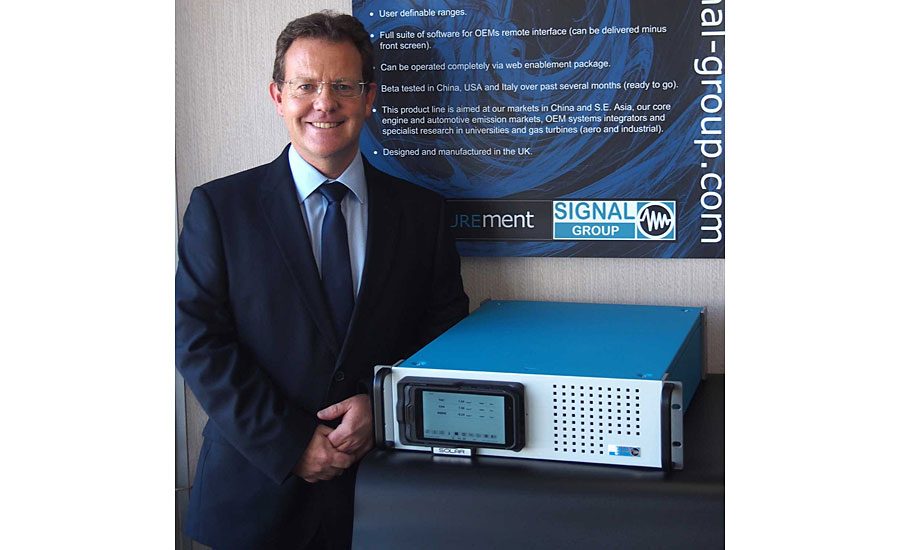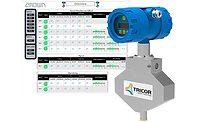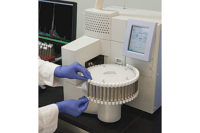Monitoring Solvent Emissions to Ensure Compliance




Governments from around the world have implemented environmental regulations to reduce the emissions of volatile organic compounds (VOCs) from industrial processes. For example, according to the European Solvents Industry Group, total VOC emissions in the EU have been reduced by more than 60% since 1990.
Background
VOCs are released from industrial activities that utilize organic chemicals such as solvents, as well as from engines and incinerators that burn organic materials and fuels. Both types of application require similar monitoring equipment, but this article will focus on those applications that involve solvents.
Solvents are used widely in the chemical industry, as well as for cleaning and degreasing products and machinery, or dissolving, thinning and dispersing coatings, adhesives, paints and inks. Solvents evaporate readily at room temperature and represent a significant safety hazard in the workplace, so they are generally vented away from workers, and the emissions from such vents frequently require abatement prior to release.
Solvent emissions have to be minimized because of their environmental effects, which include the formation of ozone, a constituent of photochemical smog. At ground level, ozone is generated when VOCs react with nitrogen oxides (NOx) in the presence of sunlight. Ozone can have both acute and chronic effects on humans; affecting the respiratory, cardiovascular and central nervous systems, as well as reproductive health. Ground-level ozone can also have harmful effects on vegetation and sensitive ecosystems.
In most countries, the emissions of regulated processes with the potential to release VOCs are issued with permits that include an emission limit for total organic carbon (TOC). The Standard Reference Method for the measurement of TOC is with a Flame Ionization Detector (FID). In some cases, it may be necessary for the monitoring activity to speciate toxic VOCs or to distinguish between methane and non-methane VOCs.
European VOC Solvent Emissions Directive (SED)
Under the SED, regulators require continuous monitoring where the average emission, following abatement, is more than 10 kg/h of total organic carbon. Continuous monitoring is also required where the regulator considers it necessary to demonstrate compliance with VOC emission limits. If continuous monitoring is not necessary, the regulator will require periodic measurements. For periodic measurements of VOC, at least three readings must be obtained during each measurement exercise. Where there is consistent compliance with emission limits, regulators may consider reducing the monitoring frequency requirement. However, the monitoring frequency should be increased, for example, as part of the commissioning of new or substantially changed activities, or where emission levels are close to the emission concentration limits.
Clearly, VOC monitoring, both continuous and periodic, have a key role to play in demonstrating compliance. However, Signal’s customers also use FIDs to measure the effects of mitigation measures; to check the performance of abatement equipment; for process control, and to investigate diffuse emissions.
Reducing VOC Emissions in the United States
In the United States, the Clean Air Act is a federal law regulating air emissions from stationary and mobile sources. The Act authorizes the United States Environmental Protection Agency (EPA) to establish National Ambient Air Quality Standards (NAAQS) to protect public health and to regulate the emissions of hazardous air pollutants. The EPA has therefore published a list of hazardous air pollutants, many of which are VOCs.
VOCs can contribute to non-attainment with the NAAQS or may adversely affect the attainment status of an area. The EPA has addressed serious violations through enforcement actions, achieving measurable pollutant reductions and improving air quality. Through partnerships with state and tribal authorities, the EPA has conducted multiple joint inspections and joint enforcement actions, and this has resulted in a significant reduction of VOC emissions, particularly from the oil and gas sector.
In the United States, Method 25 is applicable for the determination of VOCs (measured as total gaseous non-methane organics (TGNMO) and reported as carbon) in stationary source emissions. The Method says: “Direct measurement of an effluent with a flame ionization detector (FID) analyzer may be appropriate with prior characterization of the gas stream and knowledge that the detector responds predictably to the organic compounds in the stream. If present, methane (CH4) will, of course, also be measured.
The FID can be used under any of the following limited conditions:
-
Where only one compound is known to exist;
-
When the organic compounds consist of only hydrogen and carbon;
-
Where the relative percentages of the compounds are known or can be determined, and the FID responses to the compounds are known;
-
Where a consistent mixture of the compounds exists before and after emission control and only the relative concentrations are to be assessed; or
-
Where the FID can be calibrated against mass standards of the compounds emitted (solvent emissions, for example).
Another example of the use of a direct FID is as a screening method. If there is enough information available to provide a rough estimate of the analyzer accuracy, the FID analyzer can be used to determine the VOC content of an uncharacterized gas stream. With a sufficient buffer to account for possible inaccuracies, the direct FID can be a useful tool to obtain the desired results without costly exact determination.”
Alternatively, Method 25A applies to the determination of total gaseous organic concentration of vapors consisting primarily of alkanes, alkenes and/or aromatic hydrocarbons. The concentration is expressed in terms of propane (or other appropriate organic calibration gas) or in terms of carbon. Again, the Method stipulates the collection of a heated gas sample, which is passed to a flame ionization analyzer.
VOC Monitoring
As outlined above, the level of monitoring required by regulators is dictated by the scale of an operator’s VOC emissions, with continuous monitoring required for the larger emitters and discontinuous monitoring for processes with lower emissions. Signal Group has therefore developed VOC analyzers to meet both requirements – a portable heated FID (Signal MiniFID 3010) for periodic measurements and a continuous heated FID (SOLAR) for permanent installations.
The continuous heated FID SOLAR analyzer can be easily fitted into a 19” rack cabinet for indoor or outdoor installation. The analyzer has an embedded microprocessor, which automatically starts the analyzer upon receipt of a command from a detachable tablet, or from a remote installation with Signal’s S4i software. This command sets in place a sequence of analyzer actions that prepare the analyzer to take samples and report calibrated readings to the instrument’s internal datalogger.
Using an optional detachable tablet, users are able to manage the analyzer wirelessly up to 50 meters away from the analyzer. In addition, using the remote S4i software over an Ethernet connection, the analyzer can be operated from anywhere at any time. This remote accessibility also means that the Signal after-sales team can monitor alarms, conduct remote calibration and even troubleshoot if necessary.
The portable heated FID MiniFID 3010 is suitable for a variety of applications:
-
Compliance monitoring where the permit requires discontinuous measurements;
-
Calibration of CEMS;
-
Temporary back-up for CEMS;
-
Checking abatement performance;
-
Fugitive emissions investigations;
-
Process optimization.
In contrast with most of the other ‘portable’ FIDs on the market, the MiniFID 3010 was designed as a rugged, portable, field-use instrument. With an optional internal datalogger (and memory stick), sample pump, inlet filter, heated line controller and a detachable gas bottle holder, the MiniFID 3010 is ideal for use on ducts and stacks with difficult access. The analyzer’s detachable bottle holder accommodates both the burner gas and the calibration gas, with zero air provided with a background hydrocarbons purifier.
The frame is made from lightweight aluminum, and the instrument is supplied with lifting eyes and a comfortable shoulder strap. Portable FIDs often need to operate with extended power cables, so the MiniFID is able to operate without a power-hungry microprocessor, (110VAC or 220VAC is specified when purchasing). The heated line (optional 5m or 10m) is powered from a socket on the side of the analyzer, which helps to reduce the amount of cabling required. The heated line is supplied with a stainless steel sintered filter probe for insertion into the stack or duct.
The instrument is simple to operate:
-
Switch on, wait for the temperature interlock to reach set temperature.
-
Turn gases on, press “Ignite” switch.
-
Wait for the reading to settle, select “Zero” gas and adjust dial to read zero on the analyzer display.
-
Select “Span” and adjust span dial to read the value of the calibration gas.
-
Select “Sample” and the analyzer will start drawing sample gas through the heated line.
-
Wait a few minutes for the sample gas to arrive at the analyzer, and the instrument will start to display readings, which may be logged to the memory stick for later examination and reporting.
Many MiniFID 3010 users are process operators, but a larger number are environmental consultants or test houses that provide monitoring services. This is because stack testers require instruments that are rugged, reliable and designed for field operation.
Summary
FID analyzers are ideal for a variety of solvent emission monitoring applications – the list given in Method 25 provides a useful guide. It is important to remember that while Flame Ionization is the reference method for the monitoring of VOCs, the response of the analyzer will vary according to the VOC or VOCs present in the sample.
For more information, visit www.signal-group.com.
Looking for a reprint of this article?
From high-res PDFs to custom plaques, order your copy today!










